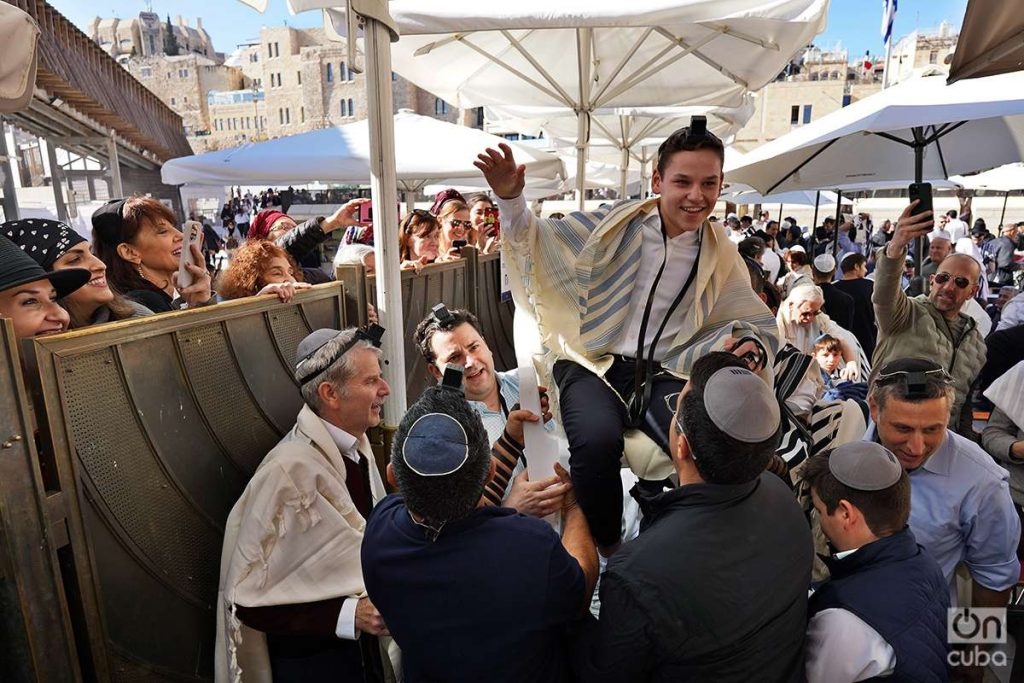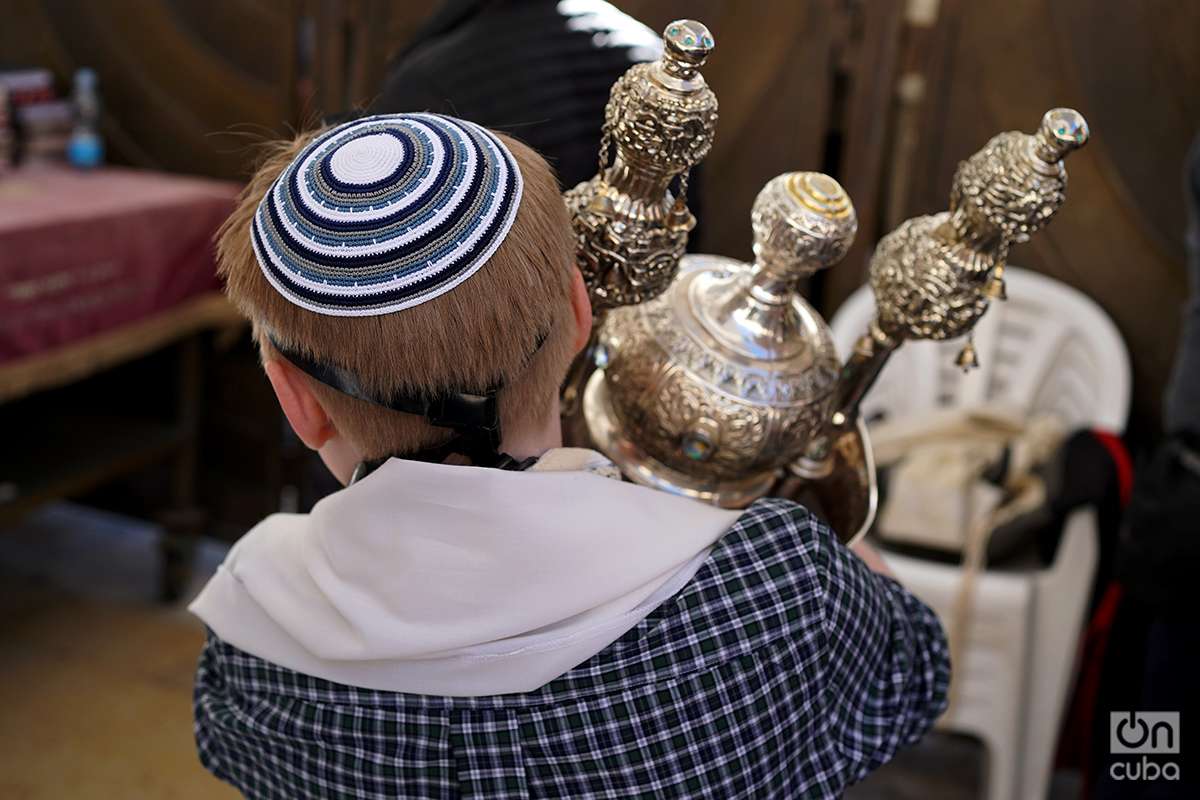Every Thursday the Wailing Wall in Jerusalem changes its routine a bit. To the image of Jews -many, ultra-orthodox- praying or reading the Torah impassively in the midst of tourists and onlookers, is added an avalanche of teenagers. They are almost children who arrive brought under a canopy or on a litter by parents and relatives—all male—in the midst of religious songs.
That day they will leave childhood behind by celebrating their Bar Mitzvah at the holiest site in Judaism: the Kotel or Wailing Wall. Here infants arrive and adults will emerge in the eyes of God.
The Bar Mitzvah—Bat Mitzvah for the girls, although they don’t celebrate it at the Wall—is an initiation ceremony that is part of the rites of Judaism. It is the moment in which adolescents become “children of the commandments”; that is to say, they must obligatorily observe the 613 commandments of the Torah and, according to Halacha or Jewish Law, they are morally responsible for their actions. In the case of girls, the indicated age is 12 years, and for boys 13.
From then on, young people can own property and get married. Men also read the Torah in public or participate in certain religious ceremonies.
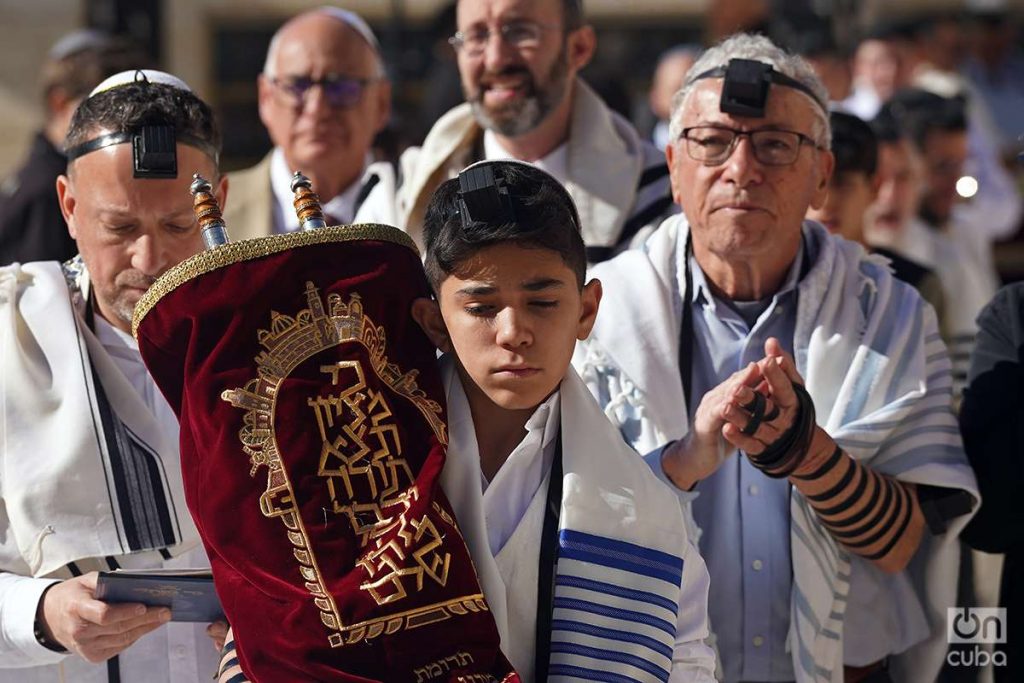

To access the Wailing Wall, religious and atheists must cover their heads. Sign that above all there is only God. For tourists, a hat or cap is enough.
The Jews are wearing their kippas. Forever. The participants in the Bar Mitzvah also cover themselves with a white cloak with blue stripes called thalid. During the ceremony, the parents of each initiate place their children for the first time on the tefillintwo small black boxes inside which passages from the scriptures are kept and which are fastened with leather straps, also black, to the head and left arm.
It is an emotional moment. The pride of fathers and mothers is felt in the air, the nervousness of young people, the joy of family members, the merriment of younger siblings who watch knowing that their turn will soon be their turn. It is not necessary to be religious or fully understand the ceremony to understand that, for them, it is a unique and special moment.
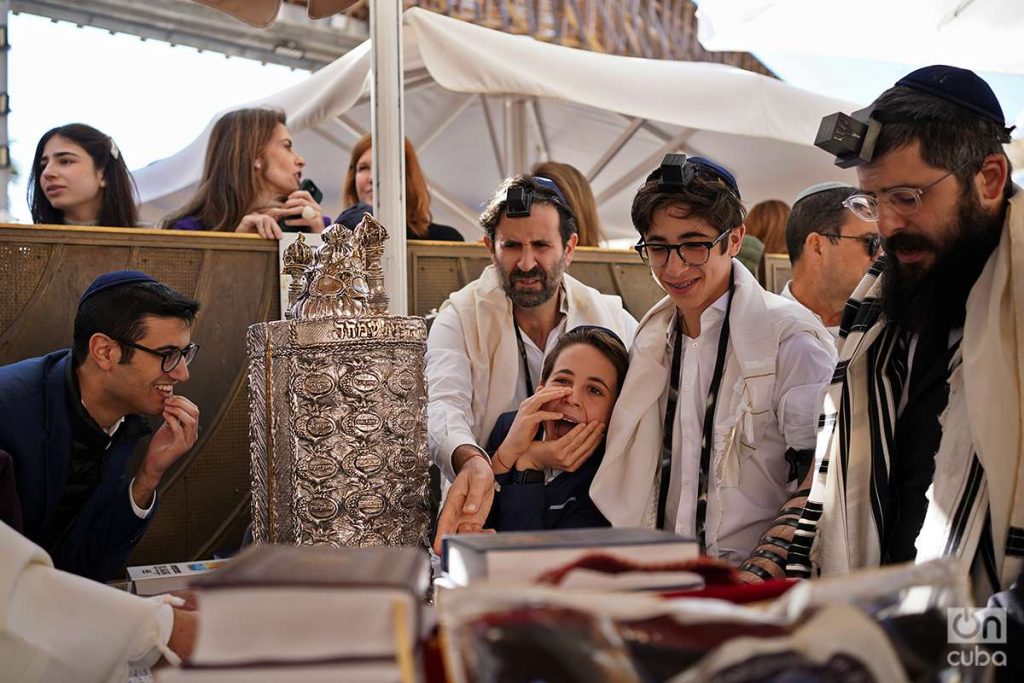
During the Bar Mitzvah, which is officiated by a rabbi, the teenager must read a passage from the sacred texts. It supposes a training of months, since they are written in ancient hebrew —no vowels!— and must be intoned precisely. The Torah is not read, it is sung. The paper should also not be touched with your hands; To mark the lines read, a silver metallic instrument called yadhand in Hebrew.
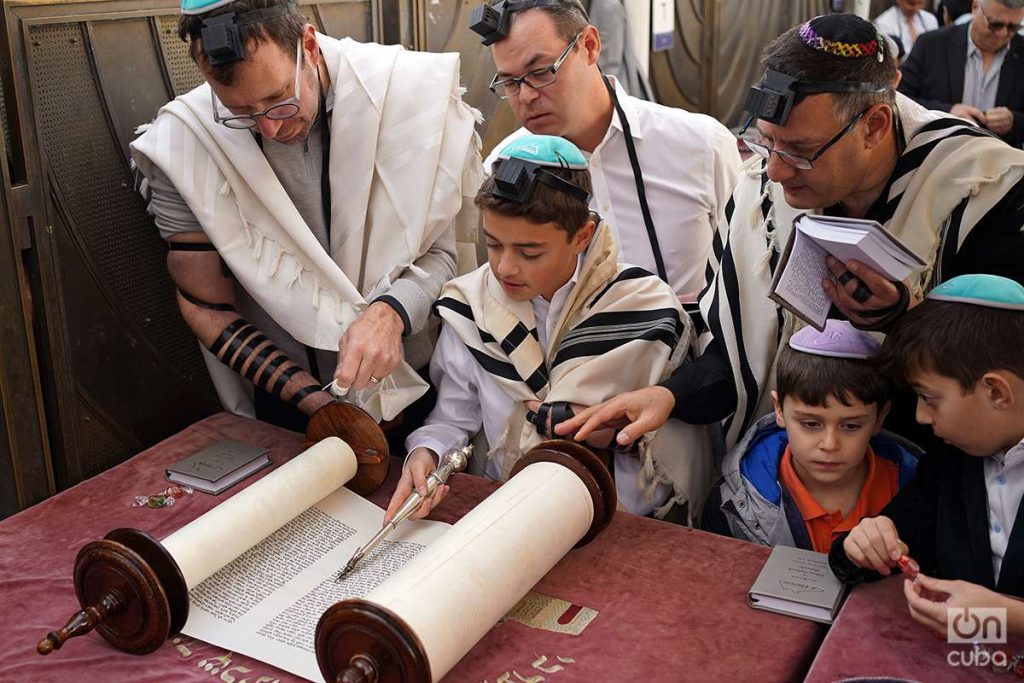
The women of the family, including the mother of the protagonist, are not allowed to participate directly in the ceremony. They can only watch their children from the female section of the Wall—the smallest. To do so, they usually climb on chairs that help them cross the metal fence that separates women and men in the holy place. From there, balancing as best they can, they celebrate their children, take photos of them and throw candies, kisses and blessings at them. Segregation in the 21st century.

The ritual part of the Bar Mitzvah lasts a short time, no more than an hour. Afterwards, the families celebrate a treat, in which they sing, dance, eat and the newly released young man is honored with gifts, something very similar to the first communion of Catholics. Of course, whoever decides to give money must do so in multiples of 18, the number of life for Jews.

